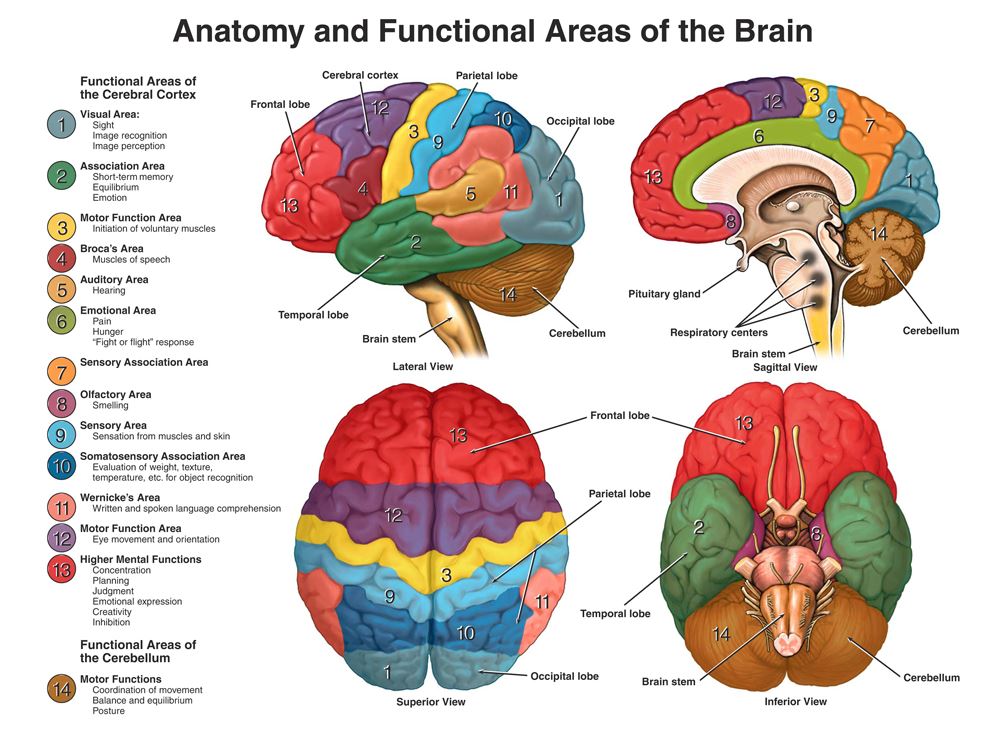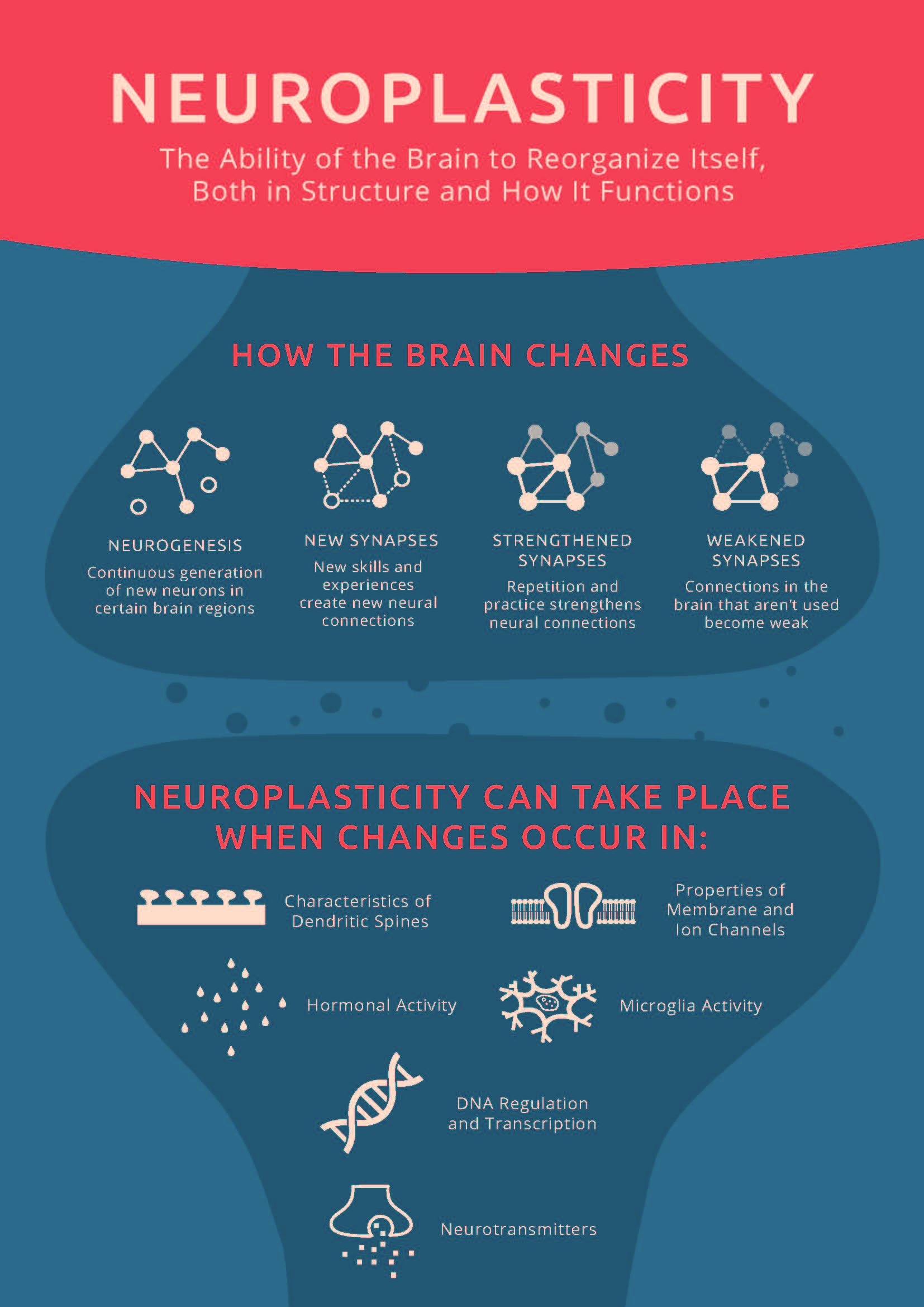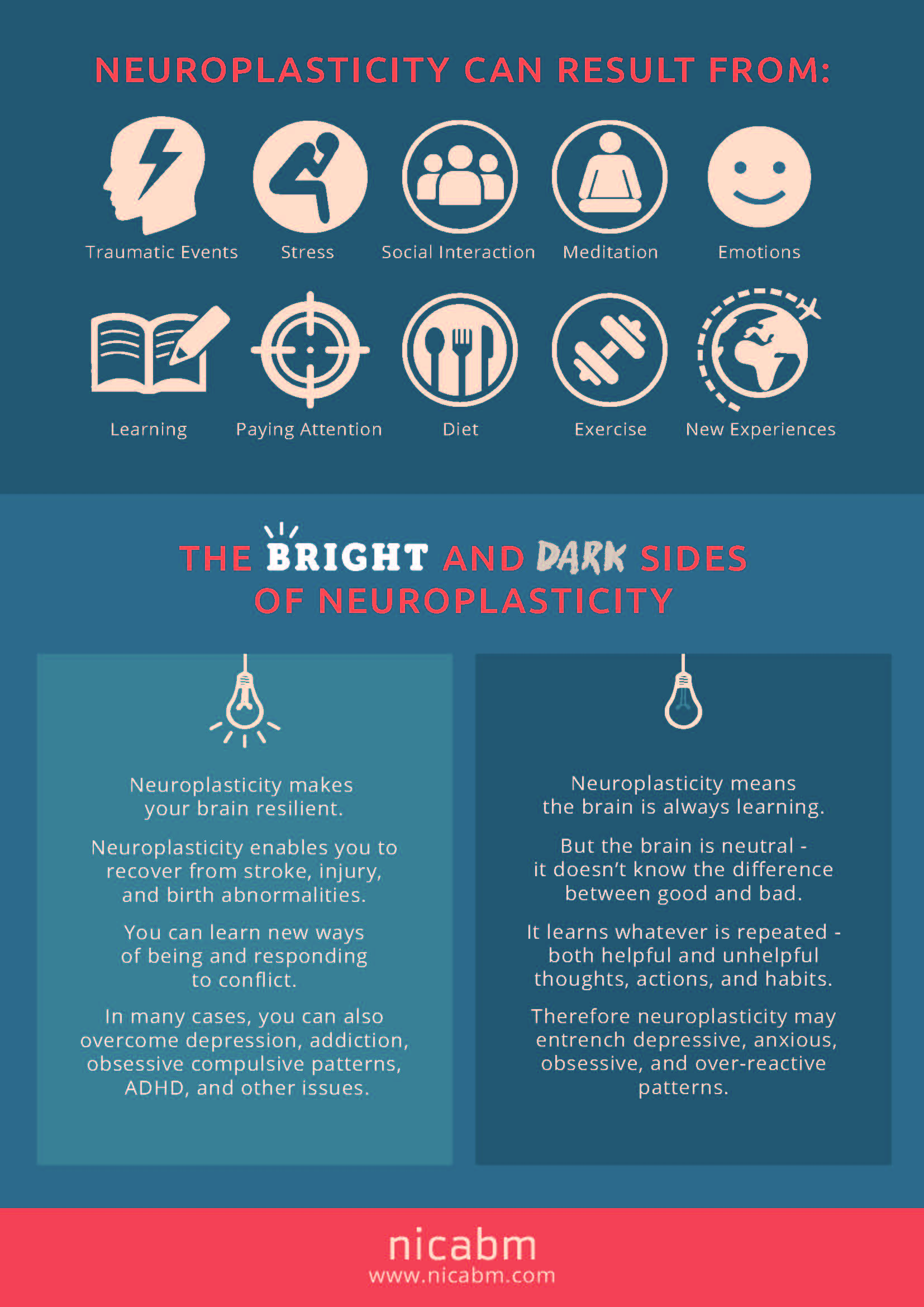Neuropsychology
Neuropsychology Overview
Neuropsychology enhances our understanding of human functioning, and thus the process of psychotherapy. I have included this special section so that you can review some basic information on brain anatomy and how it relates to memory, anxiety, and trauma. In cases of anxiety and trauma-related disorders, it is particularly helpful to the process of recovery to understand why some of the symptoms appear to be beyond one’s control.
At the end of this introductory page, there is a brief writeup on the important concept of neuroplasticity as well as a more detailed infographic produced by the National Institute for the Clinical Application of Behavioral Medicine.

Source: Biama.org
A FEW DEFINITIONS OF INTEREST
Psychology is the study of thought, behavior, and emotion and of how they are affected by both internal and external forces.
Neuroscience is the study of the human brain and nervous system. The nervous system serves to transmit signals between the brain and the rest of the body.
Neurology is a branch of medicine dedicated to the disorders of the nervous system. Modern psychotherapy owes its origins to the medical world of the late 19th century, which included an Austrian neurologist by the name of Sigmund Freud.
Neuropsychology is a science that explores the relationship between brain function on the one hand and though, behavior, and emotion on the other.
Psychotherapy is the informed and intentional application of clinical methods and interpersonal stances derived from established psychological principles for the purpose of assisting people to modify their behaviors, cognitions, emotions, and/or other personal characteristics in directions that the participants deem desirable. (This definition is accepted by the American Psychological Association, of which I am a member.)
A FEW TENETS OF NEUROPSYCHOLOGY
- A direct connection exists between the physical brain and how we think, behave, and feel
- We are born with a brain that has a specific neurological foundation determined by our genetics and by what occurred in utero and during childbirth
- Following birth, our experiences begin to imprint onto this basic neural infrastructure
- Because most of the brain development occurs after birth, our environment shapes not only our perceptions of ourselves, others, and the world, but also the neural networks in our brains
- Neural networks relevant to psychotherapy exist throughout the various regions of the brain
- Although the human brain is the most complex structure in the known universe, its architecture has vulnerabilities and shortcomings, including the issue of brain evolution and different maturation timelines for different brain areas
- The oldest areas of the brain (in the history of brain evolution) are those involved in the survival instinct, which makes them automatic, reactive, and outside of conscious awareness. These areas are developed at birth and have considerable power over our behavior
- The structures closely associated with the instinctual brain develop next and go through their fastest period of growth within the first few years of life
- The newest areas of the brain are those involved in higher functioning, which means that they operate within our conscious awareness. The structures responsible for these advanced skills mature many years after the instinctual brain and its associated areas
- The best example of this disparate timeline is the prefrontal cortex. Responsible for our most advanced skills of executive function and self-regulation, the PFC is the very last portion of the brain to mature. Although it goes through a significant developmental spurt from ages 3 to 6 years, it does not reach its full maturation until our mid/late twenties
- Because the human brain is the most complex structure in the known universe, its architecture has the extraordinary capacity to reorganize itself both in neural circuits and how it functions throughout our lives. This feature, called neuroplasticity, helps us in many ways, including:
- It allows the brain to recover (in some cases) after a traumatic brain injury, a stroke, or other brain-damaging events
- It enables us to recover from issues such as addiction, bad habits, anxiety, mood disorders, and trauma-related disorders
- It allows us to learn new things throughout our lives
- It allows us to enhance our memory abilities
A final note about neuroplasticity. It is true that some of the conditions mentioned above, such as bad habits, anxiety, and trauma become entrenched, at least in part, because of neuroplasticity. However, all of these negative alterations to the brain can be reversed by forming new neural pathways through deliberate repetition of adaptive practices. This is where EMDR and certain types of traditional talk therapies can help.


